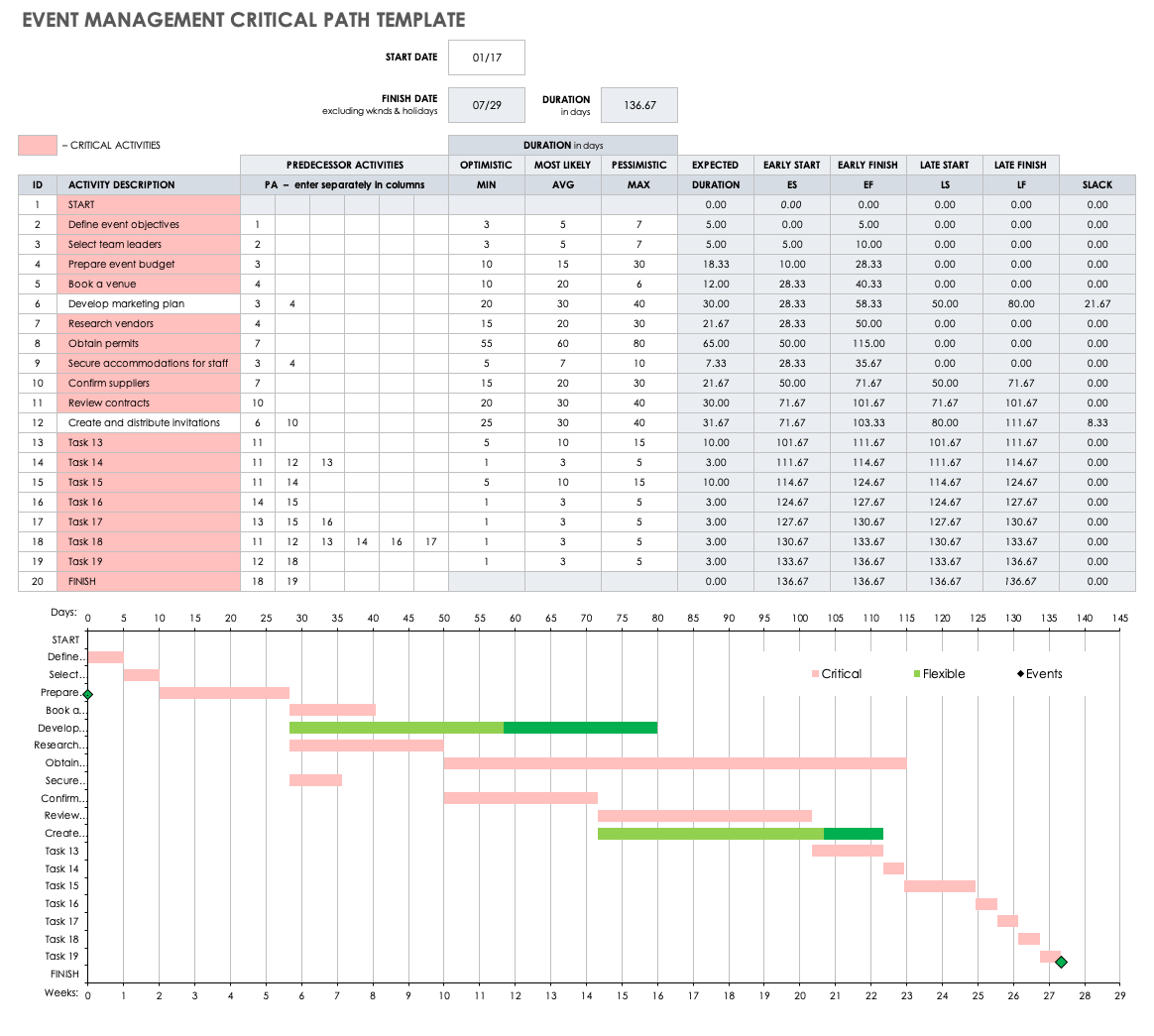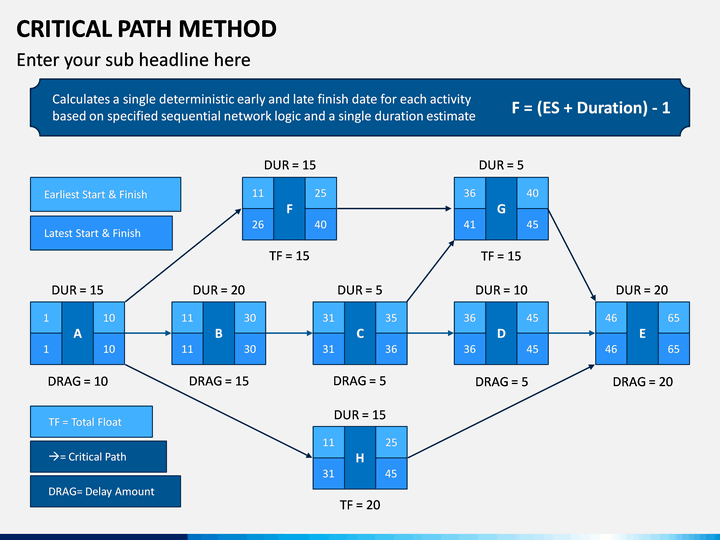

The project can only be finished when both Task-B and Task-D are completed. It is definitely shorter than Path 1, our critical path, but it is not the critical path because the milestone “Finish” is dependent on Task-D, as well as Task-B. Path 3, “Start – C -D – Finish,” has a length of 8 days. This satisfies our first statement in the definition for critical path (the longest path in a project’s network diagram).īut, what about the second statement in our definition (the shortest possible duration within which the project can be completed)? Let’s see. Obviously, the longest path is “Start – A – B – Finish.” Hence, it is the critical path, as shown in below figure. Path 5: Start – E – F – Finish = 8 days.Path 4: Start – E – D – Finish = 10 days.Path 3: Start – C – D – Finish = 8 days.Path 2: Start – C – B – Finish = 10 days.Path 1: Start – A – B – Finish = 14 days.Note the paths in the above network diagram. Going forward, in this article, the words “tasks” and “activities” are interchangeably used. Below, we have a schedule network diagram, shown with activities (or tasks) and their durations in days and milestones, as well as dependencies among the activities and milestones. Let’s take a look at an example to better understand. A critical path is the shortest possible duration within which a project will be completed.Īlthough the two short statements sound contradictory, they are actually informing complementary concepts.A critical path is the longest path through a project.We can breakdown the above statement into two shorter ones:

Critical Path and Critical Path MethodĪs documented by Project Management Institute (PMI), the critical path is defined as “the sequence of activities that represents the longest path through a project, which determines the shortest possible duration.” This leads us to the topic of Critical Path and Critical Path Method (CPM). If there are tasks (or activities) within the project that could be problematic, the PM would like to have them spotted quickly, analyzed for risks, and monitored. Just as the event manager would like to have minimal exit routes, a project manager wants to minimize ways the project’s end date could be impacted. Project management, encompassing schedule and associated risks, is quite similar. With fewer exits, you can have better management, as well as control, over the event. Of course, you will likely prefer few exit routes. Will you go for multiple exit routes in the stadium or just a few? But, your resources and budget are limited! You want to have a quick response time for any incident, and you want to quickly spot and manage any disruption right away. You want to have the security, monitoring, and all other aspects of management under control. Any untoward incident can create problems.

The audience is as passionate about watching, as their favorite players are about playing. You are in charge of managing a big match in a stadium.


 0 kommentar(er)
0 kommentar(er)
